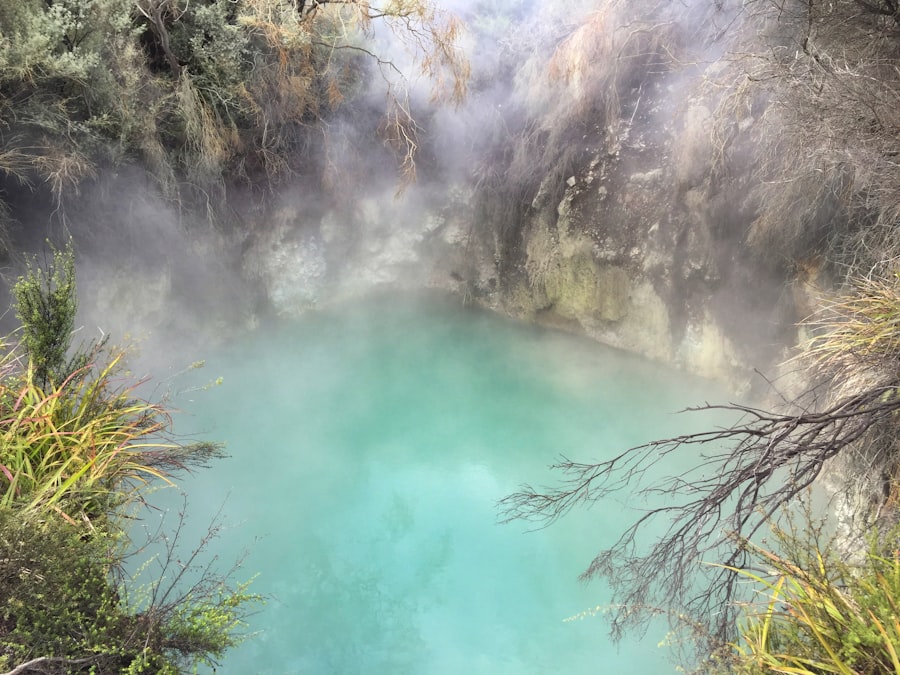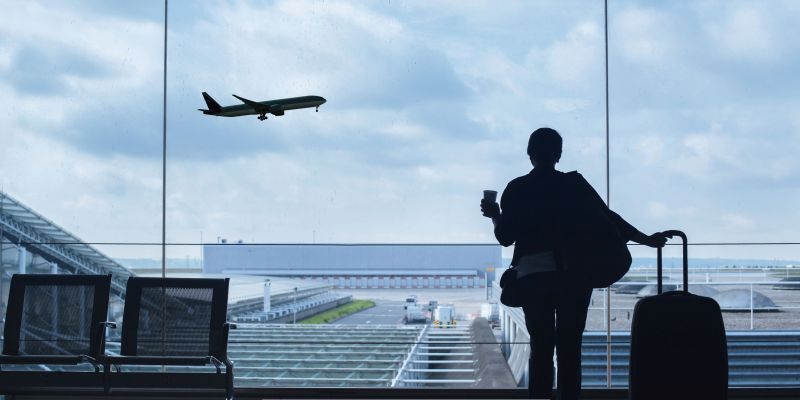The travel bubble concept emerged as a response to the unprecedented challenges posed by the COVID-19 pandemic. As countries grappled with the need to balance public health concerns with the economic imperative of tourism, the idea of creating designated zones for safe travel began to take shape. Essentially, a travel bubble is an agreement between two or more countries or regions that allows for the free movement of people without the need for quarantine or extensive health checks.
This innovative approach aims to revive the tourism sector while ensuring that safety remains a priority. In its essence, the travel bubble represents a strategic collaboration between nations, fostering a sense of trust and mutual responsibility. By establishing these bubbles, countries can create a controlled environment where travelers can explore new destinations while minimizing the risk of virus transmission.
The concept not only facilitates travel but also encourages economic recovery in regions heavily reliant on tourism. As nations begin to emerge from the shadows of the pandemic, the travel bubble concept stands as a beacon of hope for both travelers and the global economy.
Key Takeaways
- The travel bubble concept aims to create safe and controlled travel corridors between countries or regions with low COVID-19 transmission rates.
- Travel bubbles are designed to allow for the resumption of international travel while minimizing the risk of spreading the virus.
- Travel bubbles offer benefits such as reduced quarantine requirements, increased flexibility, and improved confidence for travelers.
- Technology plays a crucial role in facilitating travel bubbles through tools like digital health passports, contact tracing apps, and real-time health monitoring systems.
- Travel bubbles are redefining the travel experience by prioritizing safety, health, and seamless travel arrangements for tourists.
Understanding the Purpose of Travel Bubbles
Reducing Economic Impact
This arrangement is particularly beneficial for countries that share similar health metrics and have successfully managed the spread of COVID-19 or other infectious diseases.
Restoring Consumer Confidence
Moreover, travel bubbles serve as a means to restore consumer confidence in international travel. With many travelers hesitant to embark on journeys due to fears of contracting illness or facing quarantine upon arrival, these agreements offer a reassuring alternative.
Establishing Clear Guidelines
By establishing clear guidelines and protocols, such as vaccination requirements or testing procedures, travel bubbles can help alleviate concerns and encourage individuals to explore new destinations once again.
The Benefits of Travel Bubbles for Travelers

Travel bubbles present numerous advantages for travelers eager to resume their adventures. One of the most significant benefits is the elimination of quarantine requirements, which can often deter individuals from traveling altogether. With the assurance that they can move freely between participating countries, travelers can plan their trips with greater confidence and flexibility.
This newfound freedom allows for spontaneous travel experiences that were previously hindered by strict regulations. Additionally, travel bubbles often lead to reduced costs associated with travel. With fewer restrictions in place, airlines and hospitality businesses can offer competitive pricing and attractive packages to entice travelers back into the market.
This not only makes travel more accessible but also stimulates local economies that have suffered during the pandemic. Travelers can enjoy unique experiences at lower prices while supporting businesses that are crucial to their destinations’ livelihoods.
The Role of Technology in Facilitating Travel Bubbles
| Country | Technology Used | Benefits |
|---|---|---|
| Australia | COVIDSafe app | Tracing and monitoring of COVID-19 cases |
| New Zealand | Travel Pass app | Verification of vaccination and testing status |
| Singapore | TraceTogether app | Facilitates contact tracing and health declaration |
Technology plays a pivotal role in the successful implementation and management of travel bubbles. From digital health passports to contact tracing applications, technological innovations are essential in ensuring that travelers meet the necessary health requirements before embarking on their journeys. These tools help streamline the process of verifying vaccination status or negative test results, making it easier for travelers to navigate entry requirements.
Moreover, technology enhances communication between governments and travelers, providing real-time updates on changing regulations or health advisories. Mobile applications can serve as platforms for travelers to access vital information about their destinations, including safety protocols and local guidelines. By leveraging technology, countries can create a seamless travel experience that prioritizes safety while fostering a sense of community among travelers.
How Travel Bubbles are Redefining the Travel Experience
As travel bubbles gain traction, they are fundamentally reshaping how individuals perceive and engage with travel. The focus has shifted from merely visiting new places to experiencing them in a more meaningful way. With fewer tourists in popular destinations due to limited travel options, travelers can enjoy a more authentic experience, immersing themselves in local cultures and communities without the usual crowds.
Furthermore, travel bubbles encourage travelers to explore lesser-known destinations within participating countries. As traditional tourist hotspots become less accessible, individuals are prompted to seek out hidden gems and off-the-beaten-path locations. This shift not only enriches the travel experience but also promotes sustainable tourism practices by distributing economic benefits more evenly across regions.
Challenges and Limitations of Travel Bubbles

Despite their potential benefits, travel bubbles are not without challenges and limitations. One significant hurdle is the ever-changing nature of public health data and regulations. As new variants of viruses emerge or case numbers fluctuate, countries may need to reassess their participation in existing bubbles or establish new ones altogether.
This uncertainty can create confusion for travelers who may find themselves facing sudden changes in entry requirements or restrictions. Additionally, not all countries have equal access to vaccines or healthcare resources, which can complicate the establishment of travel bubbles. Disparities in vaccination rates may lead to concerns about safety and equity among participating nations.
As such, it is crucial for governments to address these inequalities and work collaboratively to ensure that all regions can benefit from safe travel opportunities.
Countries and Regions Embracing the Travel Bubble Concept
Several countries and regions have embraced the travel bubble concept as a means of revitalizing their tourism sectors. For instance, Australia and New Zealand were among the first to establish a trans-Tasman bubble, allowing citizens from both nations to travel freely without quarantine requirements. This agreement not only facilitated family reunions but also provided a much-needed boost to local economies reliant on tourism.
Similarly, parts of Southeast Asia have begun exploring travel bubble arrangements as they seek to recover from the pandemic’s impact on their tourism industries. Countries like Thailand and Singapore have initiated discussions about creating safe corridors for vaccinated travelers, aiming to attract tourists while ensuring public health remains a priority. These initiatives highlight the growing recognition of travel bubbles as a viable solution for navigating post-pandemic travel challenges.
Tips for Navigating Travel Bubbles as a Traveler
For travelers looking to take advantage of travel bubbles, there are several essential tips to keep in mind. First and foremost, staying informed about entry requirements is crucial. Travelers should regularly check official government websites or trusted sources for updates on vaccination mandates, testing protocols, and any potential changes in regulations that may affect their plans.
Additionally, it is wise for travelers to remain flexible with their itineraries. Given the dynamic nature of travel bubbles, plans may need to be adjusted at short notice due to changing circumstances. By maintaining an adaptable mindset and being prepared for unexpected developments, travelers can navigate these new landscapes with greater ease and confidence.
The Future of Travel Bubbles in a Post-Pandemic World
As the world gradually moves toward recovery from the pandemic, the future of travel bubbles appears promising yet uncertain. While they have proven effective in facilitating safe travel during challenging times, their long-term viability will depend on various factors, including global vaccination efforts and evolving public health guidelines. Countries must continue collaborating and sharing data to ensure that these arrangements remain beneficial for all parties involved.
Moreover, as travelers become more accustomed to navigating health protocols and safety measures, there may be an increased demand for more permanent travel arrangements that prioritize safety without compromising convenience. The lessons learned from implementing travel bubbles could pave the way for innovative solutions that redefine international travel in a post-pandemic world.
Environmental and Sustainable Implications of Travel Bubbles
The establishment of travel bubbles also raises important questions about environmental sustainability in tourism. As countries seek to revive their economies through increased visitor numbers, it is essential to consider how this influx may impact local ecosystems and communities. Sustainable practices must be integrated into the framework of travel bubbles to ensure that tourism does not come at the expense of environmental degradation.
Travel bubbles can promote sustainable tourism by encouraging responsible travel behaviors among visitors. By focusing on lesser-known destinations and supporting local businesses, travelers can contribute positively to the communities they visit while minimizing their ecological footprint. Additionally, governments can implement policies that prioritize sustainable practices within their tourism sectors, ensuring that economic recovery aligns with environmental stewardship.
Embracing the Opportunities of Safe and Seamless Adventures
In conclusion, the travel bubble concept represents a significant evolution in how individuals approach international travel in a post-pandemic world. By facilitating safe movement between designated regions, these agreements offer travelers renewed opportunities for exploration while prioritizing public health concerns. As countries continue to embrace this innovative approach, it is essential for both governments and travelers alike to remain adaptable and informed.
The future of travel bubbles holds immense potential for redefining the global tourism landscape. By leveraging technology, promoting sustainable practices, and fostering collaboration among nations, travelers can embark on safe and seamless adventures that enrich their lives while supporting local economies. Ultimately, embracing the opportunities presented by travel bubbles will pave the way for a brighter future in international travel—one where safety and exploration go hand in hand.
FAQs
What is a travel bubble?
A travel bubble, also known as a travel corridor or travel bridge, is an agreement between two or more countries to open their borders to each other for travel without the need for quarantine or other travel restrictions.
How does a travel bubble work?
In a travel bubble, participating countries agree to open their borders to each other’s citizens, allowing for travel between the countries without the need for quarantine or other travel restrictions. This is typically based on the countries having low levels of COVID-19 cases and implementing similar health and safety measures.
What are the benefits of a travel bubble?
The main benefit of a travel bubble is the resumption of international travel and tourism between participating countries, which can help to revive the tourism industry and boost the economies of the countries involved. It also allows for the reunification of families and loved ones separated by international borders.
Which countries have established travel bubbles?
Several countries and regions have established travel bubbles, including Australia and New Zealand, Singapore and Hong Kong, and the Baltic states of Estonia, Latvia, and Lithuania. Other countries are also exploring the possibility of creating travel bubbles with neighboring countries.
What are the challenges of implementing a travel bubble?
Challenges in implementing a travel bubble include coordinating health and safety measures between participating countries, ensuring compliance with travel restrictions and quarantine requirements for non-participating countries, and managing the potential risk of a resurgence of COVID-19 cases within the travel bubble.









